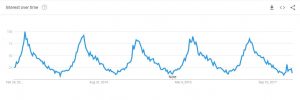This is going to get a little complicated but hang in there because it’s really important.
Google has announced that beginning this month they will be “…tightening its policy for handling emails that fail the authentication checks of the Domain-based Message Authentication, Reporting & Conformance (DMARC) standard”.
Ok, hold on, I can see your eyes starting to cross. We’ll go through this one step at a time.
First, what is this DMARC stuff? DMARC is an email authentication protocol that helps identify messages that claim to be coming from a domain (yourbusinessname.com) that they really aren’t coming from.
It’s like when you get that email from your bank but it’s not really coming from your bank! Email authentication tries to keep that message from getting to you. So, email authentication is a really good thing.
According to DMARC “The goal of DMARC is to build on this system of senders and receivers collaborating to improve mail authentication practices of senders and enable receivers to reject unauthenticated messages.”
Basically, what this means is that DMARC is “talking” to the recipient’s server to confirm that the domain (yourbusinessname.com) in the “From” field of the email is, in fact, the domain that the email was sent from.
Ok, Enough of That
So, now you’re wondering what this all has to do with you, right?
With Google’s decision to filter on DMARC, any email that comes to their servers with @gmail.com in the “From” field that didn’t start on a Gmail server will be rejected.
Ok, here’s the example that will help this all make sense.
Let’s say that you are using an email service like Constant Contact for your business. Your Constant Contact is setup under your business domain yourbusinessname.com.
Let’s go one step further and assume that when you send out your email blasts you’re using a @gmail.com address in the “From” field.
Now, when you send out your email blast, your messages will be rejected for every person on your list with a @gmail.com address because Google is recognizing that even though there is a @gmail.com in the from field, the email really didn’t originate on their servers. It had actually originated, in this example, on Constant Contacts servers.
Because there is a disconnect between what is in the “From” field and the actual server that the email was sent from, Google (and a growing list of company-owned servers) are rejecting your email message and not even making it to the recipient’s spam box.
Whew! That Wasn’t So Bad, Was It?
So, what should you do? The first thing to do is to stop using a @gmail.com address in the email messages that you are sending out from a 3rd party provider like Constant Contact.
Secondly, contact your email marketing provider to make sure that your account with them is setup properly to be in full compliance with the DMARC email authentication standards.
Digital & Social Articles on Business 2 Community(45)





